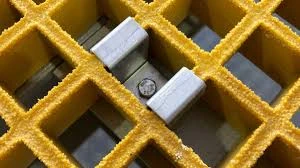
-
 Afrikaans
Afrikaans -
 Albanian
Albanian -
 Amharic
Amharic -
 Arabic
Arabic -
 Armenian
Armenian -
 Azerbaijani
Azerbaijani -
 Basque
Basque -
 Belarusian
Belarusian -
 Bengali
Bengali -
 Bosnian
Bosnian -
 Bulgarian
Bulgarian -
 Catalan
Catalan -
 Cebuano
Cebuano -
 China
China -
 China (Taiwan)
China (Taiwan) -
 Corsican
Corsican -
 Croatian
Croatian -
 Czech
Czech -
 Danish
Danish -
 Dutch
Dutch -
 English
English -
 Esperanto
Esperanto -
 Estonian
Estonian -
 Finnish
Finnish -
 French
French -
 Frisian
Frisian -
 Galician
Galician -
 Georgian
Georgian -
 German
German -
 Greek
Greek -
 Gujarati
Gujarati -
 Haitian Creole
Haitian Creole -
 hausa
hausa -
 hawaiian
hawaiian -
 Hebrew
Hebrew -
 Hindi
Hindi -
 Miao
Miao -
 Hungarian
Hungarian -
 Icelandic
Icelandic -
 igbo
igbo -
 Indonesian
Indonesian -
 irish
irish -
 Italian
Italian -
 Japanese
Japanese -
 Javanese
Javanese -
 Kannada
Kannada -
 kazakh
kazakh -
 Khmer
Khmer -
 Rwandese
Rwandese -
 Korean
Korean -
 Kurdish
Kurdish -
 Kyrgyz
Kyrgyz -
 Lao
Lao -
 Latin
Latin -
 Latvian
Latvian -
 Lithuanian
Lithuanian -
 Luxembourgish
Luxembourgish -
 Macedonian
Macedonian -
 Malgashi
Malgashi -
 Malay
Malay -
 Malayalam
Malayalam -
 Maltese
Maltese -
 Maori
Maori -
 Marathi
Marathi -
 Mongolian
Mongolian -
 Myanmar
Myanmar -
 Nepali
Nepali -
 Norwegian
Norwegian -
 Norwegian
Norwegian -
 Occitan
Occitan -
 Pashto
Pashto -
 Persian
Persian -
 Polish
Polish -
 Portuguese
Portuguese -
 Punjabi
Punjabi -
 Romanian
Romanian -
 Russian
Russian -
 Samoan
Samoan -
 Scottish Gaelic
Scottish Gaelic -
 Serbian
Serbian -
 Sesotho
Sesotho -
 Shona
Shona -
 Sindhi
Sindhi -
 Sinhala
Sinhala -
 Slovak
Slovak -
 Slovenian
Slovenian -
 Somali
Somali -
 Spanish
Spanish -
 Sundanese
Sundanese -
 Swahili
Swahili -
 Swedish
Swedish -
 Tagalog
Tagalog -
 Tajik
Tajik -
 Tamil
Tamil -
 Tatar
Tatar -
 Telugu
Telugu -
 Thai
Thai -
 Turkish
Turkish -
 Turkmen
Turkmen -
 Ukrainian
Ukrainian -
 Urdu
Urdu -
 Uighur
Uighur -
 Uzbek
Uzbek -
 Vietnamese
Vietnamese -
 Welsh
Welsh -
 Bantu
Bantu -
 Yiddish
Yiddish -
 Yoruba
Yoruba -
 Zulu
Zulu
fiberglass stack
The Versatility and Applications of Fiberglass Stacks
Fiberglass stacks, which are structures crafted from fiberglass reinforced plastic (FRP), have emerged as a crucial component in various industrial applications due to their unique properties. Fiberglass is a composite material made from fine strands of glass that are woven together and combined with resins to create a strong, lightweight, and corrosion-resistant product. As industries strive for efficiency and environmental responsibility, the use of fiberglass stacks has gained prominence in areas such as power generation, chemical processing, and marine applications.
One of the primary advantages of fiberglass stacks is their exceptional resistance to corrosion. Traditional materials like steel or concrete can deteriorate when exposed to harsh chemicals or environmental conditions. In contrast, fiberglass stacks maintain their integrity and performance, especially in environments where flue gases contain moisture, acids, or other corrosive components. This feature is particularly beneficial in industries such as power plants, where emissions require effective dispersal without compromising the structural integrity of the stack.
Moreover, fiberglass stacks are lightweight compared to traditional materials. This characteristic simplifies installation processes, reduces transportation costs, and minimizes the load on supporting structures. The ease of installation is particularly advantageous in locations where heavy machinery cannot be used or where space is limited. This lightweight nature does not compromise strength; fiberglass stacks can handle significant stress and pressure, making them suitable for various applications.
The versatility of fiberglass stacks extends to their customization options. Manufacturers can tailor the size, shape, and specifications of fiberglass stacks to meet specific project needs. This flexibility is vital in industries where different processes may require unique stack configurations to optimize efficiency or comply with regulatory standards. The ability to mold fiberglass into complex shapes allows engineers and designers to integrate these stacks seamlessly into existing infrastructure, enhancing overall system performance.
fiberglass stack

In terms of environmental considerations, fiberglass stacks play a vital role in reducing emissions and improving air quality. By effectively dispersing exhaust gases, these stacks help mitigate the impact of industrial operations on the environment. Furthermore, the durability of fiberglass reduces the frequency of replacement and maintenance, leading to lower resource consumption and waste generation over time.
The maritime sector has also recognized the benefits of fiberglass stacks, particularly in vessels that require lightweight and corrosion-resistant exhaust solutions. Boats and ships equipped with fiberglass exhaust systems can enhance fuel efficiency, performance, and safety while navigating harsh marine environments. The integration of fiberglass stacks in marine vessels underscores the material's adaptability across various domains.
In addition to their practical applications, fiberglass stacks contribute to energy efficiency. By ensuring that exhaust gases are released at the correct height, these stacks help minimize the chances of pollution reaching ground level, thereby safeguarding public health and air quality. Their design considerations often include features that enhance thermal efficiency, further contributing to reduced energy consumption in industrial processes.
In conclusion, fiberglass stacks represent a remarkable advancement in engineering material technology. Their resistance to corrosion, lightweight nature, customization options, and environmental benefits position them as an indispensable asset in various industries. As manufacturers continue to innovate and adapt to changing environmental regulations, the importance of fiberglass stacks in promoting sustainable practices and efficient operations will only grow. Industries looking for reliable, durable, and effective solutions for managing emissions and enhancing productivity should consider integrating fiberglass stacks into their systems. With ongoing research and developments, the future of fiberglass technology holds even more promise for advancing industrial sustainability and performance.
Latest news
-
Exploring the Benefits of Top Hammer Drifter Rods for Enhanced Drilling PerformanceNewsJun.10,2025
-
High-Precision Fiberglass Winding Machine for GRP/FRP Pipe Production – Reliable & Efficient SolutionsNewsJun.10,2025
-
FRP Pipes & Fittings for Shipbuilding - Corrosion-Resistant & LightweightNewsJun.09,2025
-
Premium FRP Flooring Solutions Durable & Slip-ResistantNewsJun.09,2025
-
Premium Fiberglass Rectangular Tanks Durable & Lightweight SolutionNewsJun.09,2025
-
Tapered Drill String Design Guide Durable Performance & UsesNewsJun.09,2025









